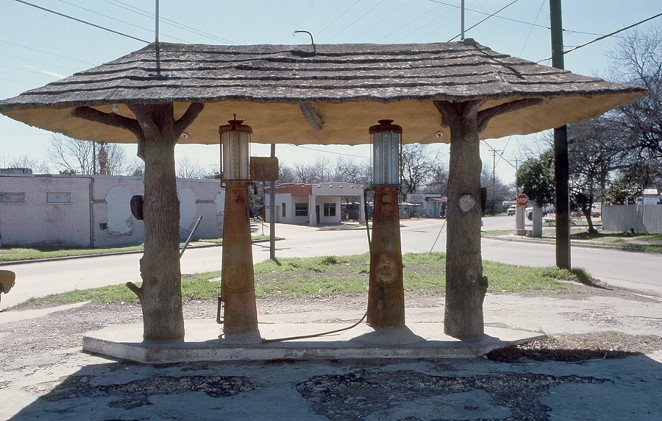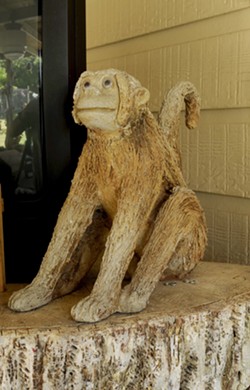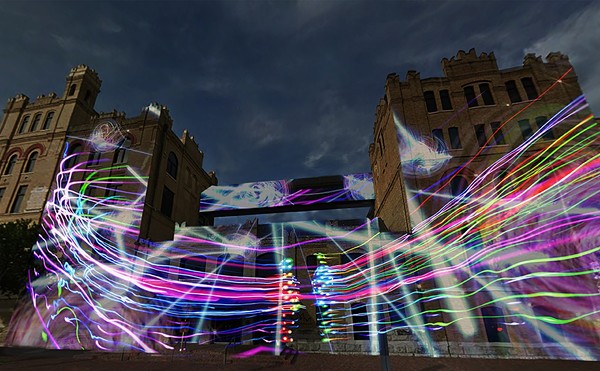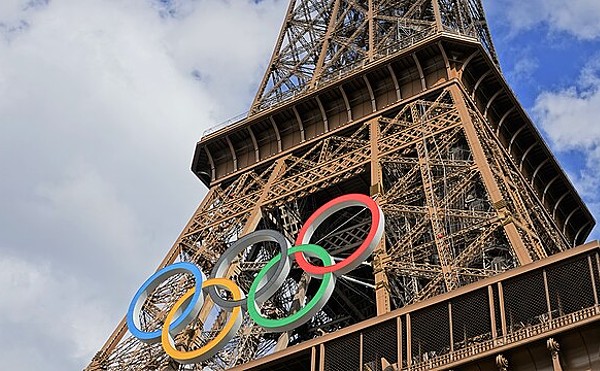
Fitting for the artistic illusions it creates, one could say the form developed organically. What’s more, San Antonio played a significant role in its growth — as evidenced by works such as the distinctive trabajo rústico footbridge in Brackenridge Park, among other local landmarks.
A new coffee table book published by Texas A&M Press, Artisans of Trabajo Rústico: The Legacy of Dionicio Rodríguez, highlights the legacy and influence of the artisan who brought the form to the Alamo City.
The marriage of trabajo rústico’s materials first came into focus at the 1867 Paris Exposition, where French gardener Joseph Monier made a splash with weather-resistant “ferro-cement” flowerpots. His creations were facilitated by the invention of portland cement and the advent of inexpensive, mass-produced steel in the mid-19th century.
That same year, Paris welcomed the sprawling Parc des Buttes Chaumont, a public space that featured reinforced concrete railings painstakingly carved to resemble tree limbs among its distinguishing design features.
As trends do, France’s faux bois movement spread, first to Italy and Spain — modernist architect Antoni Gaudí was a notable fan — and then to Argentina and Mexico. And eventually Texas.
San Antonio arrival

A native of Toluca, Mexico, Dionicio Rodríguez worked alongside his father as a brick maker in Mexico City and most likely learned to fabricate in the trabajo rústico style from Luis Robles Gil, an artisan who trained in Spain.
After creating numerous concrete sculptures in Mexico, Rodríguez immigrated to San Antonio in 1924 and began working for Dr. Aureliano Urrutia — a surgeon who designed his private sculpture garden Miraflores in homage to the “floating gardens” of Mexico City’s Xochimilco.
Through his work at Miraflores — a Texas Historic Landmark adjacent to Brackenridge Park — Rodríguez began receiving public and private commissions to create trabajo rústico pieces across Texas and in seven other states.
Beyond his exacting work — which can be seen in Brackenridge Park, Memorial Park Cemetery in Memphis and even an Arkansas mill that appears in the opening credits of Gone with the Wind — Rodríguez’s influence extends impressively through the network of assistants and protégées he trained.
“When I first discovered Dionicio’s work about 20 years ago, it was like opening a door to a light-filled cavern,” author, artist and historian Patsy Pittman Light said.
After co-authoring the National Register of Historic Places listing for “The Cement Sculpture of Dionicio Rodríguez in Texas” with Maria Pfeiffer in 2004, Light dove even deeper into the esteemed artisan’s legacy for her award-winning 2008 book Capturing Nature: The Cement Sculpture of Dionicio Rodríguez.
A California transplant who moved to San Antonio in the 1970s, photographer, educator and master printmaker Kent Rush shares Light’s fascination with trabajo rústico and Rodríguez’s distinct influence.
“When I first came to San Antonio to start the print program at the San Antonio Art Institute, I began to notice these trabajo rústico pieces in town,” Rush recalled. “I have always been a fan of vernacular art — yard art, car art, roadside attractions — and I was intrigued with these odd pieces that looked like wood but were made of concrete. I had no idea what it was, nor did I know that it had a history as a traditional genre. … I was thrilled to see that Patsy had written a book about this work and learned a lot from reading it.”

In addition to bonding over their interest in the niche, the pair teamed up to co-curate “The Tradition of Trabajo Rústico: Fantasies in Cement,” a 2010 exhibition hosted by the Southwest School of Art and sponsored by the San Antonio Conservation Society.
“While working with Patsy, it came to my attention that she had a lot of information on the other artisans that Rodríguez trained as apprentices and who later went off on their own and started their own independent practices,” Rush said. “I proposed to Patsy that we work together to make a book about these other artisans.”
The resulting collaboration is the Texas A&M Press book, Artisans of Trabajo Rústico, published late last year.
Through Light’s voice and Rush’s images, the genre comes clearly into focus with a

Following chapters dedicated to background, history, preservation and the fabrication of trabajo rústico — where Rush steps in as author and tackles everything from armature and joinery to surface modeling and coloration — the coffee table book breaks out into profiles of 20 early and contemporary artisans.
Although San Antonio culture fanatics will undoubtedly recognize a few names — including prolific local artisan Carlos Cortés, son of frequent Rodríguez collaborator Máximo Cortés — there’s plenty to discover about the stylistic breadth of the genre, which goes whimsically beyond familiar benches, railings, palapas and pagodas.
On these pages, Rush’s photographs illustrate the organic nuances of trabajo rústico and the local legacy of Rodríguez, whose work is so realistic that it’s often mistaken for the real thing.
Stay on top of San Antonio news and views. Sign up for our Weekly Headlines Newsletter.
















